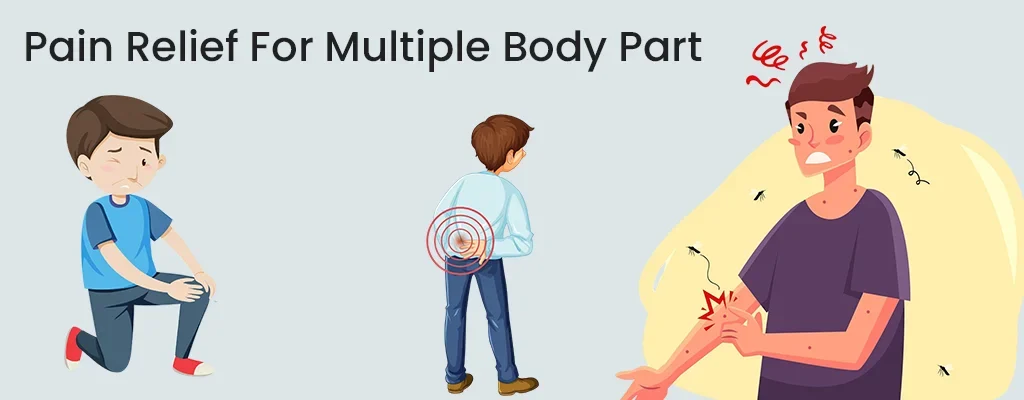One common treatment applicable when it comes to moderate to severe pain is tramadol uses. Being an opioid analgesic, tramadol has produced results when it comes to treatment of the different pain related illnesses. That is why at MedsDepot.org we help you learn all you need to know about such medicines. This medicine tramadol and how can help you treat your condition regarding pain relief while keeping yourself safe.
Tramadol is a prescription medication. It helps primarily to relieve moderate to severe pain. It works by affecting the brain and spinal cord, altering the way the body responds to pain. Unlike stronger opioids like morphine or oxycodone, tramadol is thought to be a less potent option. Which makes it ideal for managing conditions that don’t require the strongest pain medications but still need effective relief.
While tramadol is structurally helpful to opioids. It also works by interacting with the reuptake of neurotransmitters – serotonin and norepinephrine that assists in controlling the pain. This analgesic drug comes in different sizes, and the most frequently prescribed sizes are the 50mg and 100mg tablets. It can be helpful in an extended release form for patients with chronic pain
This medication’s common application is for managing acute or chronic pain in those who have moderate pain conditions. This is particularly common to be helped for pain management after or during an operation. Also injury or severe chronic illness like arthritis and fibromyalgia. It is also useful in treating muscular pain, back pain and pains resulting from osteoarthritis.

Tramadol provides several privileges. The patients who suffer from pain management. Any other opioids, tramadol has moderate addiction and dependence. So it regularly helps for chronic pain management. For moderately painful conditions tramadol gives enough pain relief without committing the patient to potent narcotics which are addictive.
Tramadol is very useful when the patient has undergone surgery or suffers from an injury. Also it helps patients after surgeries such as arthroplasty or other orthopedic operations. Pain after the surgery can be mild, moderate or severe; tramadol addresses these pains without causing overly powerful side effects like narcotics. For individuals recovering from surgery, tramadol is beneficial for keeping pain manageable so they can focus on their recovery and physical therapy.
Since tramadol has a lower sedative effect compared to stronger painkillers, patients may find it easier to stay active and involved in rehabilitation. This allows for a smoother transition back to normal activities, helping the body heal more effectively after surgery.
For those with chronic pain conditions, such as osteoarthritis, fibromyalgia, or nerve pain, tramadol is a preferred option for many healthcare providers. It can offer relief for extended periods when used in its extended-release form, allowing patients to manage ongoing pain more effectively.
In conditions like fibromyalgia, where widespread muscle and joint pain are prevalent, tramadol can provide relief by addressing both the pain itself and the discomfort caused by the nervous system. Additionally, since tramadol is not as addictive as other opioids, it is a safer long-term treatment for chronic pain.
Like all medications, tramadol comes with potential risks and side effects. While it is less potent than stronger opioids, it can still cause dizziness, nausea, constipation, and drowsiness. These side effects are generally mild and tend to lessen over time, but they can be bothersome for some individuals.
Another consideration is tramadol’s potential for abuse, though it is much lower than other opioid medications. Misusing tramadol, especially in higher doses or in combination with other substances like alcohol, can lead to serious health risks, including respiratory depression and overdose.
Additionally, tramadol may not be suitable for individuals with a history of seizures, as it can lower the threshold for seizure activity. It’s important to consult with a healthcare provider before starting tramadol, particularly if you have any pre-existing medical conditions.
Thus, tramadol is one of the most effective remedies. It is targeting pain and it is characterized by high coefficients of efficiency. And in case of moderate and severe pains. This ability makes it quite suitable for use by many patients with different types of pain. However, tramadol should be taken as advised to avoid dependency and the side effects it may present. This means that only having information about how to use it. And how it is useful and what it can harm. It can be used effectively to help with pain. Tramadol should only be used after consulting your healthcare provider if it will be suitable for your health condition. Responsible use check this medication will help enhance the standard of your life immensely without having the chances of negative effects showing up regularly.


Hello! We now offer bank payments. Send a message here to open your WhatsApp to know how!